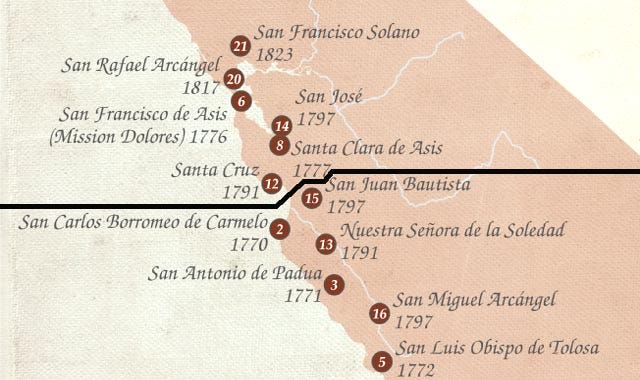Ep. 050: All the Missions in a Day, Part II
Speeding Even Farther Up California's El Camino Real
Please note: I've made a "live" Google Map for my Temple Guy page that shows the missions of California and some associated sites. You can find it here.
--------
This Episode is Part II of the story of my epic one-day dash from the Mexican border to above San Francisco, visiting all of California's Spanish missions--in one day!
When last we saw our heroes, they had just visited the ninth of twenty-one missions. The wild ride--with a couple of wrong turns--continues in this episode of--
TEMPLE TALES!



